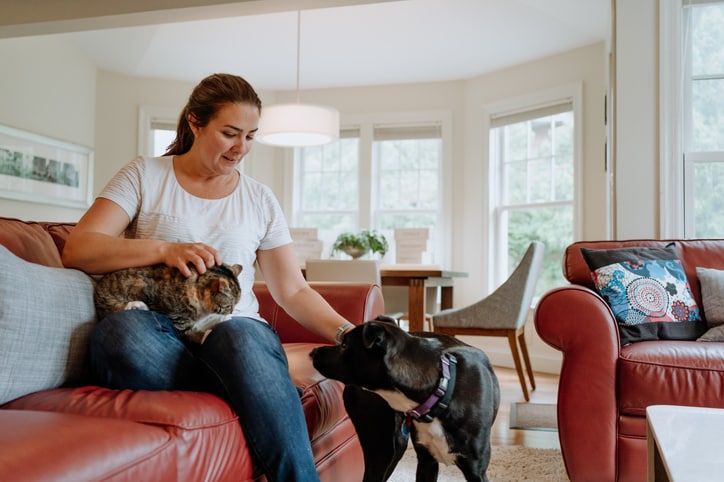Training dogs is the most effective way to ensure that they behave most of the time. Yet many people do not invest the time and effort to properly train dogs. This could result in behavioral problems, and sometimes, it causes people to take the dog back to the pound. Make sure that you develop a good relationship with your dog by avoiding these mistakes.
According to the Humane Society of the United States, roughly 39 percent of American households own at least one dog. However, becoming a dog owner is a responsibility. Before bringing a dog into your home, it’s best to do your homework to ensure you know how to train him. Proper training will help you build a great relationship with your pet and create a foundation for lifelong companionship. Successful training takes practice, and people commonly make mistakes. Here are some common training errors and how to correct them.
-
Remain Positive
It’s easy to observe your dog behaving badly. Most dog owners are reactive, but dogs learn best with positive reinforcement. Ted Terroux, founder of Terroux Dog Training in Denver, Colo., says positive reinforcement should be practiced regularly. “To encourage good habits, make sure your dog has three successes or three periods of success at the end of every session,” he says.Helen Cariotis, president and executive director of the National Association of Dog Obedience Instructors, suggests you “tell your dog many times each day what you want him to continue to do. Say ‘good sit’ or ‘good down’ when the dog does those things on his own.”
-
Be Consistent
Many people train their dogs haphazardly. It’s not enough to train when you remember or only once in a while. Cariotis recommends incorporating small training tasks into your daily routine. “Teaching doesn’t have to wait for obedience school,” she says. “It starts with everyday chores like feeding (sit and wait for food), effective management like confining (crate training and baby gates), exercising/play and housebreaking, etc.” -
Control Exposure to Stimuli
Terroux says many people overexpose their dogs to stimuli. By overloading your puppy, you may be setting her up for behavioral problems. “The biggest contributing factor to behavior problems in dogs is allowing them to have too much outdoor access during their puppy and juvenile stages,” Terroux says. “It’s better to control all access to stimulus that causes inappropriate behavior until the dog can handle it responsibly on his own.” It may seem like common sense to play outside with your dog, but over stimulating can stress your puppy and lead to behaviors such as nipping or becoming too excitable inside. -
Recognize Common Issues
Many dogs exhibit common behavioral problems such as excessive barking, jumping, chewing, digging and running wild. Cariotis encourages potential dog owners to do their research before picking their dog. Some dogs do not belong in certain households.“The vast majority of objectionable issues are present because owners do not train their dogs, do not manage and socialize them appropriately, get the wrong dog for their family, do not make the dog a part of the family/socially isolate the dog, don’t realistically have time for a dog and are just not educated about how to properly raise and maintain a dog,” she says.
Make sure your potential dog’s temperament is appropriate for your home. A dog sensitive to noises and other stimuli is not the best choice for a home with small children.
-
Consult Professionals
It’s OK to take your dog to a trainer if he is exhibiting behavior problems. This does not make you a bad pet owner. If your dog is overly aggressive, prone to biting or simply won’t stop engaging in behavior that drives you crazy, a professional trainer can help. Find a trainer in your area who offers a comprehensive curriculum to ensure he is receiving training for the right problem.
Training should begin from the moment your new puppy enters your home. It should be done daily, or several times a day if you have the time. By investing time and care into your new puppy, you will end up with a loving, gentle companion who is treasured by the whole family.



